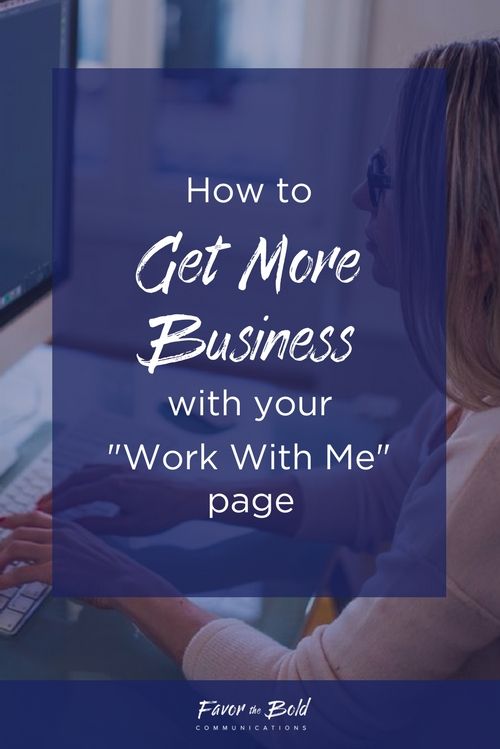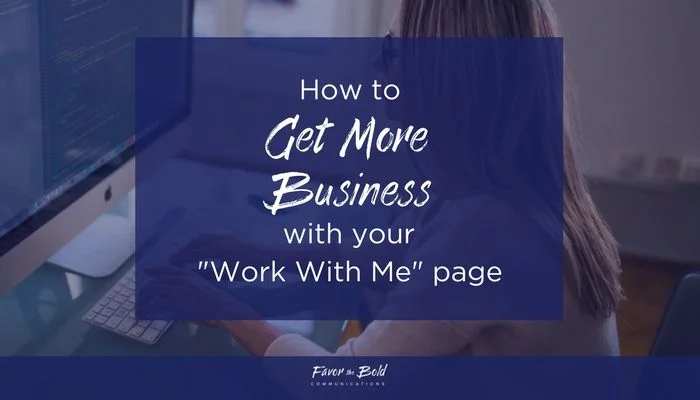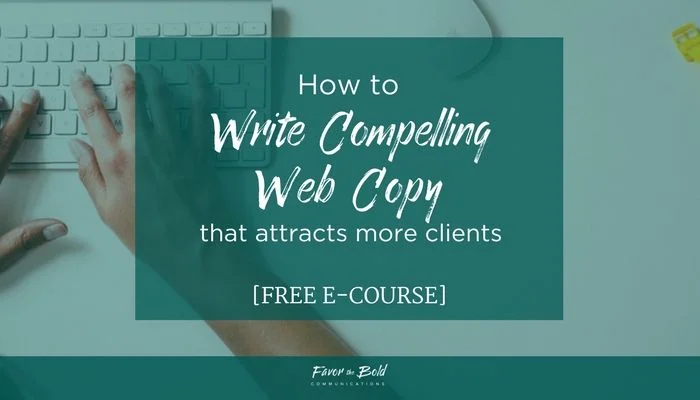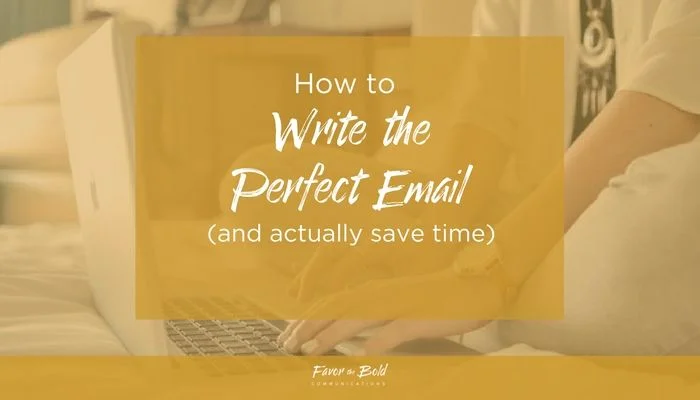Selling services is tricky. Every client is different and services are rarely a one-size-fits-all kinda deal.
Which makes writing your Work With Me page seem way harder than it needs to be.
How much detail should you go into?
Do you list your prices like a menu?
Do you offer packages or à la carte options?
Even naming the page is confusing. Is it called “Services”? “Work With Me”? “Hire Me”?
I know it’s a lot to think about, so to make your life easier, let’s get clear on the goal of your Work With Me page.
Your Work With Me page is there to show what you offer and how someone can hire you.
That’s not to say it’ll be all in-your-face salesy. You’re not “selling” on your Work With Me page, you’re simply explaining to an already interested audience how you can help them.
Here’s how.
1. Start with your one-sentence elevator pitch
If someone is on your services page, chances are they didn’t land there by accident. Maybe they landed on one of your blog posts, or started on your Home page.
That said, just because this isn’t their first impression of you, it doesn’t mean they know what you do.
Before listing your services, start with a headline that shows the overall benefit of what you offer.
This is the perfect place to use your one-line elevator pitch: what you do, who you do it for and why they need it.
Essentially, you want to remind your audience why they need you so that they’re motivated to keep reading about how to work with you.
2. Structure the page to make it scannable
You know what drives me to drink? Paragraphs upon paragraphs of text on a website-- especially on a services page.
Visitors to your Services page want to understand whether or not what you offer can help them-- and they don’t want to read through 6 paragraphs to do so.
The goal is to help your audience find what they’re looking for. They’re on your services page because they have a problem-- and they’re hoping you might have the solution.
Help your ideal clients know you’re for them by structuring your services page with clear headers that use their language.
Let’s spend a little time on “headers that use their language.” What I mean is that the names of your services (aka, your headers) should use the words your ideal clients are looking for.
This means steering clear of gimmicky names for your services. Your clients aren’t looking for “words that wow,” they’re looking for copywriting. They don’t want “brand soul-searching,” they want a damn logo.
When it comes to naming your services and structuring your page, make it easier for your audience to understand what you do by being clear, not clever.
3. Focus on what they’ll get
Your services page is where people go to learn more about what you offer and how you work. But remember, the main question in their mind is, “Can you help me?”
The fact is, people buy results, not processes.
They buy transformation: how can you take them from their undesired “before” state to their desired “after” state?
Of course, they’ll want to know what you offer. But what they’re really trying to figure out is whether what you offer will help them get where they want to go.
So make sure your services descriptions include the results they get from working with you-- their “after”-- rather than just giving the details of your process.
4. Include your process and how you work
That said, if someone visits your services page, they do expect some information about how you work. That’s not to say you should overload them with details, but you should certainly help them know what to expect when they work with you.
Do you offer coaching or a do-it-for-you service? Do you have a clear process to get proven results? Do you offer different services for different kinds of clients?
Helping your ideal clients understand exactly what you offer and how you work shows that you know what you’re doing.
It reassures them that you have a proven process that has worked for other people like them. It makes you look like a pro.
That said, assuming there’s another step between your website and a client signing a contract, your Services page doesn’t need to include every single detail about working with you. That’s what your consultation call, contract and onboarding process are for.
If the next step after your services page is simply “Get in touch,” all your page needs to do is compel visitors to do just that. Give them enough information to help them trust that you can solve their problem-- and then guide them to the next step to learn more.
5. Offer proof
It’s one thing to tell your audience how you can help them. But if you really want to turn that random visitor into a prospect, telling them isn’t enough-- you have to show them.
Use proof to show your ideal client that you don’t just offer your service-- you get results with your service.
And a great way to do that is with client testimonials.
People often hide their testimonials on a separate, dedicated testimonials page, but really, they’re missing out.
Because what better way to illustrate the benefit of what you do than with well-placed (and, ahem, well-written) testimonials from past clients that prove you get results?
6. Give them a clear next step.
Now that I think about it, there’s another thing people do on their websites that makes me want to go to town on a bottle of wine:
They never say how to hire them.
Maybe you think it’s obvious that people should use the form on your contact page if they want to work with you. But let me tell you a secret:
Your audience doesn’t want to think.
They don’t want to guess what to do. They want to be told exactly what to do next-- and they want it to be easy.
Help people hire you by explicitly telling them what to do next-- and by making it as easy as possible.
So at the end of your services page (or even after each section!), add a link or button they can click that takes them to the next step.
For example, calls to action could be:
- Contact me to set up a consultation call (linked to your contact page or email)
- Set up a consultation call now (linked to a scheduling tool like Calendly)
- Learn how to work with me here (linked to your process for qualifying new clients)
The name of the game is clarity and simplicity. Don’t give them tons of options. Don’t make them look for your contact page. Don’t make them think.
Make hiring you the easiest decision your ideal clients have ever made-- and then overdeliver to make it the best one.











![How to boost your brand offline-- and get more business [Part 3]](https://images.squarespace-cdn.com/content/v1/5671d7a82399a31f114f4c55/1477565172008-2K7456WNHWYM99T12HTV/How+to+boost+your+brand+offline--+and+get+more+business.jpg)